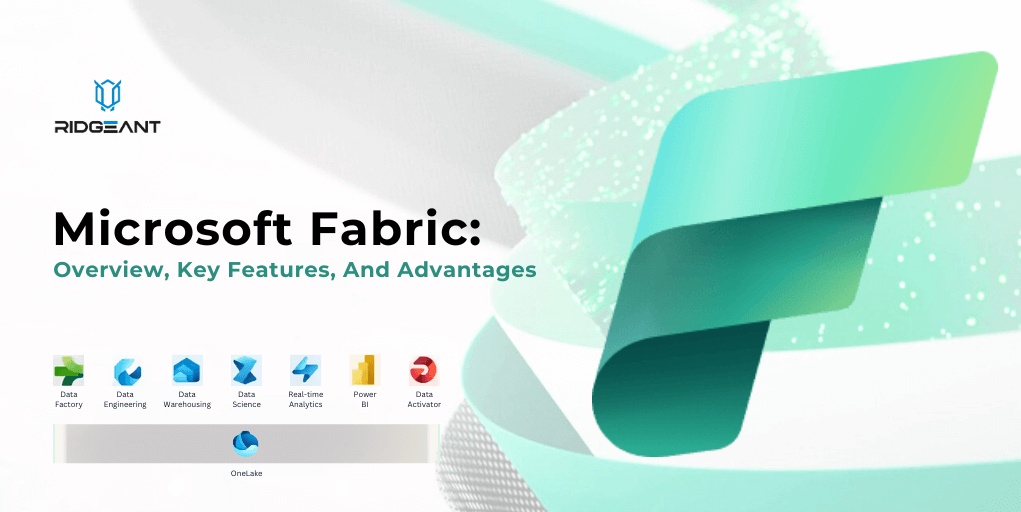Introduction:
In today’s rapidly evolving digital landscape, businesses need robust and reliable tools to drive efficiency, productivity, and innovation. Microsoft Fabric, a comprehensive platform developed by Microsoft, offers a range of powerful services and features that can transform the way organizations build and manage their applications. In this blog post, we will explore the top 10 benefits of Microsoft Fabric and how it can positively impact businesses of all sizes.
Top 10 Benefits of Microsoft Fabric
Scalability and Resilience:
One of the primary advantages of Microsoft Fabric is its scalability and resilience. Fabric provides a distributed system runtime that allows applications to scale seamlessly to meet growing demands. It achieves this by automatically distributing workloads across multiple nodes, making it resilient to failures and ensuring high availability of applications.
Simplified Application Development:
Fabric simplifies the development process by providing a rich set of development tools and APIs. Developers can leverage its programming models to build reliable, scalable, and easily deployable applications. The platform also supports multiple programming languages, such as C#, Java, and Node.js, giving developers the flexibility to choose the language they are most comfortable with.
Fault Tolerance and Self-Healing:
Microsoft Fabric incorporates fault tolerance and self-healing capabilities, which are critical for modern applications. It continuously monitors the health of services and automatically detects and recovers from failures. By distributing application components across multiple nodes, Fabric ensures that even if one node fails, the application remains operational.
Microservices Architecture:
Fabric embraces the microservices architectural pattern, allowing organizations to break down their applications into smaller, independent services. This modular approach enhances scalability, fault isolation, and enables teams to develop and update services independently. Fabric’s built-in support for service discovery, load balancing, and versioning simplifies the management of microservices-based applications.
Hybrid Cloud Deployment:
With Fabric, businesses can easily deploy their applications across hybrid cloud environments. Whether it’s on-premises data centers, Azure cloud, or even other cloud providers, Fabric provides a consistent and unified platform to manage and orchestrate applications. This flexibility enables organizations to leverage the benefits of hybrid cloud, such as scalability, cost optimization, and data sovereignty.
Automated Operations:
Fabric streamlines operations by automating several administrative tasks, including application deployment, scaling, and monitoring. Its integrated tooling and APIs enable administrators to manage applications efficiently, reducing the complexity and time required for manual operations. Automated monitoring and diagnostics further enhance troubleshooting and performance optimization.
High Performance and Low Latency:
Fabric’s lightweight runtime and efficient communication protocols ensure high performance and low latency for applications. It leverages advanced technologies like in-memory caching, distributed caching, and reliable messaging to achieve optimal performance. This is particularly advantageous for latency-sensitive workloads and real-time applications.
Seamless Integration with Azure Services:
As a part of the Microsoft ecosystem, Fabric seamlessly integrates with various Azure services, providing access to a wide range of capabilities. Organizations can leverage Azure services like Azure Cosmos DB, Azure Event Hubs, Azure Functions, and Azure Machine Learning, to enhance the functionality and capabilities of their Fabric-based applications.
DevOps and Continuous Delivery:
Fabric supports DevOps practices and continuous delivery pipelines, enabling organizations to deliver new features and updates rapidly. It integrates with popular CI/CD tools like Azure DevOps, Jenkins, and GitHub Actions, allowing teams to automate build, test, and deployment processes. This facilitates faster time-to-market, better collaboration between development and operations teams, and promotes a culture of continuous improvement.
Community and Support:
Microsoft Fabric benefits from a vibrant and active community of developers and experts. The availability of extensive documentation, tutorials, and community forums provides valuable resources for developers to learn, troubleshoot, and share best practices. Additionally, Microsoft offers comprehensive support plans, ensuring prompt assistance for organizations using Fabric in their production environments.
Also Read: Microsoft Fabric: Overview, Key Features, And Advantages
Conclusion:
Microsoft Fabric is a powerful platform that offers numerous benefits for organizations looking to build and manage modern applications. Its scalability, resilience, simplified development, fault tolerance, and support for microservices make it an ideal choice for businesses aiming to stay agile and competitive in today’s digital landscape. By leveraging the capabilities of Microsoft Fabric, organizations can unlock new opportunities, enhance operational efficiency, and deliver innovative solutions to their customers.


No comments yet